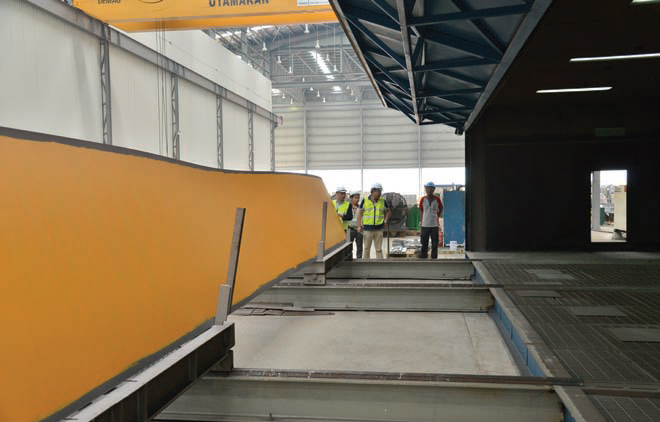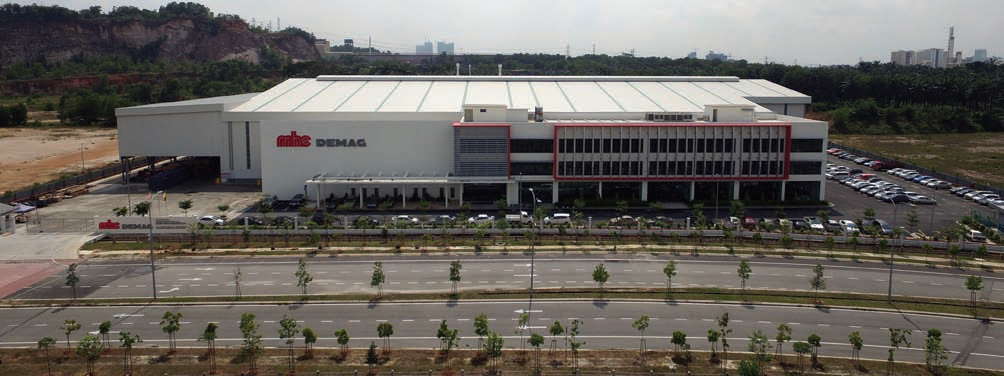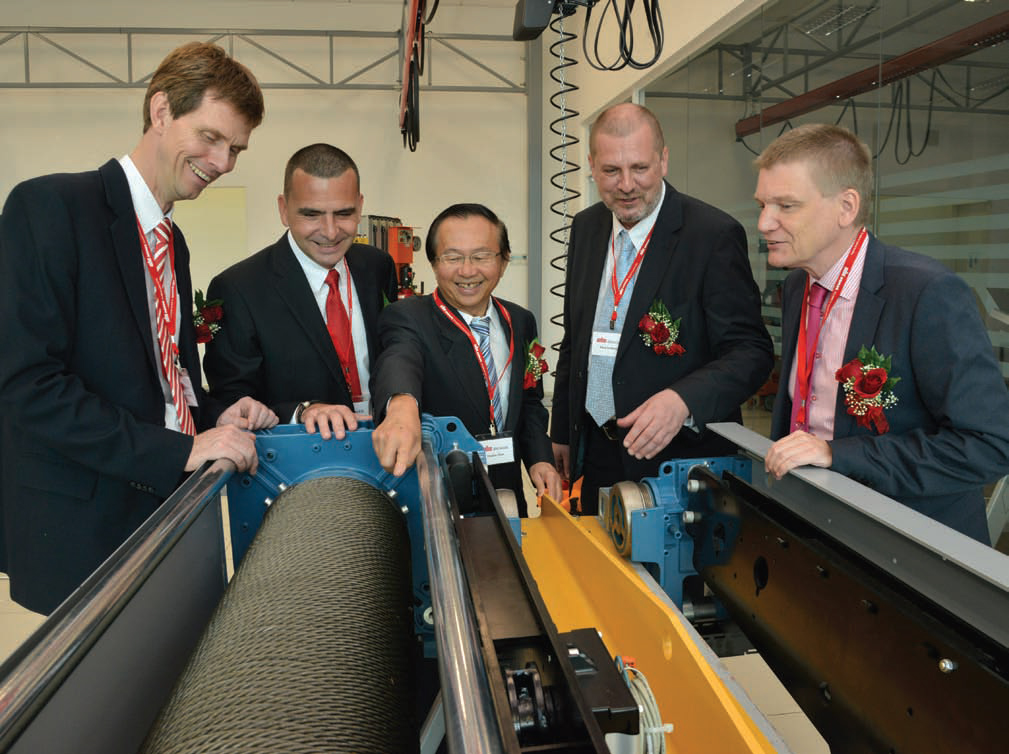Production expansion
24 January 2017At the end of 2016, MHE-Demag opened a new manufacturing plant in Malaysia. Sotiris Kanaris speaks to regional managing director Karl Tilkorn about the company’s strategy and market trends.
MHE-Demag, a joint venture between Terex MHPS and Jebsen & Jessen (SEA), has been operating in Malaysia for over 40 years. With two manufacturing facilities and twelve sales and service offices in the country, the company has become a key player in the local crane and hoist market.
It offers a full range of services, which include design, supply, install, commissioning, testing and after sales service, supply of spare parts, preventive maintenance and breakdown services.
Last December, MHE-Demag officially opened a manufacturing and warehouse facility in Bukit Raja, Malaysia. Developed at a cost of $10m, its built-up area covers 15,000sq m sitting on over 26,000sq m of land.
The company says this is the largest and most modern of its 11 manufacturing facilities in Southeast Asia.
Regional managing director at MHE-Demag Karl Tilkorn, explains the reasons behind the investment: “Our previous manufacturing site could no longer cope with the demand and growth of our business. With the growth in our customer portfolio and especially with the prestigious projects we have secured, we recognized that an expansion was necessary.”
The new facility can operate at a capacity of 200,000 production hours a year, 54% more than the previous site.
At this facility, the company will be able to produce cranes of up to 50m span. A regional training centre will also be hosted in these premises, where employees and customers throughout the group will attend skills training and upgrading programmes.
As for the location choice, Tilkorn says: “The new site is located within proximity to international ports enabling us to efficiently ship these cranes to customers within the region, primarily in Australia, Cambodia and Myanmar.
“We are also located close to key manufacturing and industrial customers in Shah Alam and Klang, and have ready access to the North-South Highway—a nationwide expressway—which will also allow us to supply to customers all through the country as well as to neighbouring Singapore.”
Tilkorn says MHE-Demag’s overhead crane customers in Malaysia are primarily from industries that require raw materials or finished product lifting, such as the manufacturing and logistics sectors.
“Our products are also widely selected and installed in the automotive industry. We have a good relationship and track record with automotive makers such as Daihatsu, Toyota, Malaysian car makers Perodua and Proton; as well as Mazda and Mercedes,” he adds.
MHE-Demag has observed an increase in demand for cranes in Malaysia in recent years, with Tilkorn attributing it to various infrastructure projects.
In 2010, the Malaysian government announced the construction of a three-line mass rapid transit system (MRT), a mega project that could help improve the city’s traffic congestion.
Apart from this, there have also been several key Government driven projects such as the extension of the light rapid transit (LRT) line and the construction of the West Coast Expressway (WCE).
“MHE-Demag has secured projects to supply overhead cranes for several local power plant projects, namely the Tanjung Bin Energy (TBE) power plant located in Johor, and the Jemaah Power Plant located in Negeri Sembilan,” says Tilkorn.
The Demag DR range of rope hoists and engineered cranes are the company’s most popular products in Malaysia.
Tilkorn says there has been an increased demand for standard cranes and hoists in markets such as Australia and Singapore.
“As these markets are mature, there is a smaller number of big scale government infrastructure projects. Many of the crane requirements in these markets are primarily for the private sector or for upgrades and therefore are mostly smaller in size and scale.
“In comparison, other emerging markets including Myanmar and Cambodia require both engineered and standard cranes and hoists as a result of the infrastructure development growth we are seeing in these countries.
These various large-scale development activities also require the application of cranes with greater size and span.”
MHE-Demag is also seeing increased enquiries for explosion proof cranes and hoists from Australia and Malaysia. Tilkorn says: “Explosion proof products are well accepted and common in industries such as oil & gas, chemical, petrochemical, coal, steel, paint & coating because of the high level of understanding with respect to the hazardous and explosive operating environments.
“However, industries such as food and beverage manufacturing, sugar refining, grain and flour milling are commonly overlooked even though these are also high risk, potentially explosive operations.
Future looks bright
Tilkorn is optimistic about the growth of the Malaysian crane market in the near future.
“We believe that the outlook for infrastructure projects in the country still looks really bright with GDP growth of 4–5% which is a crucial contributing factor to the demand for cranes,” he says.
With the US$13.1bn East Coast Rail Line (ECRL) project that will span four states in peninsular Malaysia and connect townships such as Port Klang, ITT (Integrated Transport Terminal) Gombak, Kuantan, Kuala Terengganu, Kota Baru and Tumpat, many industries are going to benefit from it, including cranes and hoists. The construction of the project is expected to start this year and it is due to be complete by 2022.
Tilkorn says: “There are opportunities in the pipeline that have been secured by MHE-Demag several years ago which are expected to be delivered in 2017 and most of these projects require engineered solutions. We also foresee competition from China in projects which are price sensitive but mainly limited to standard cranes and hoists.”
In 2017, MHE-Demag will introduce two new products to the market, the Demag DMR Rope hoist and the Demag V-Girder Crane. The company expects both to gain its customers’ interest with their advanced features and benefits.
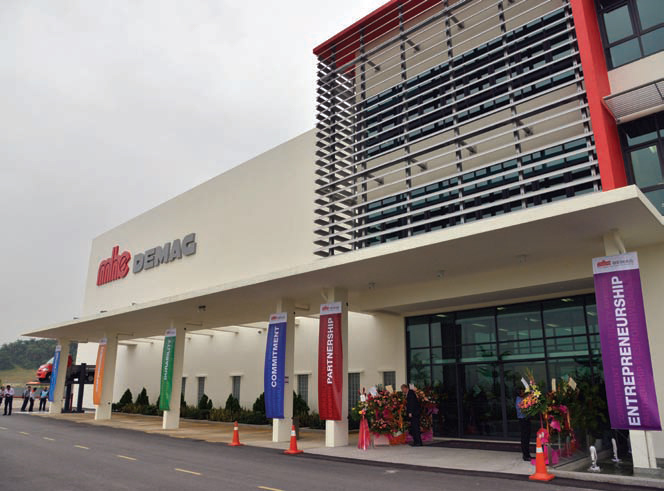 Front view of MHE Demag’s office at its new manufacturing facility in Bandar Bukit Raja, Selangor, Malaysia
Front view of MHE Demag’s office at its new manufacturing facility in Bandar Bukit Raja, Selangor, Malaysia
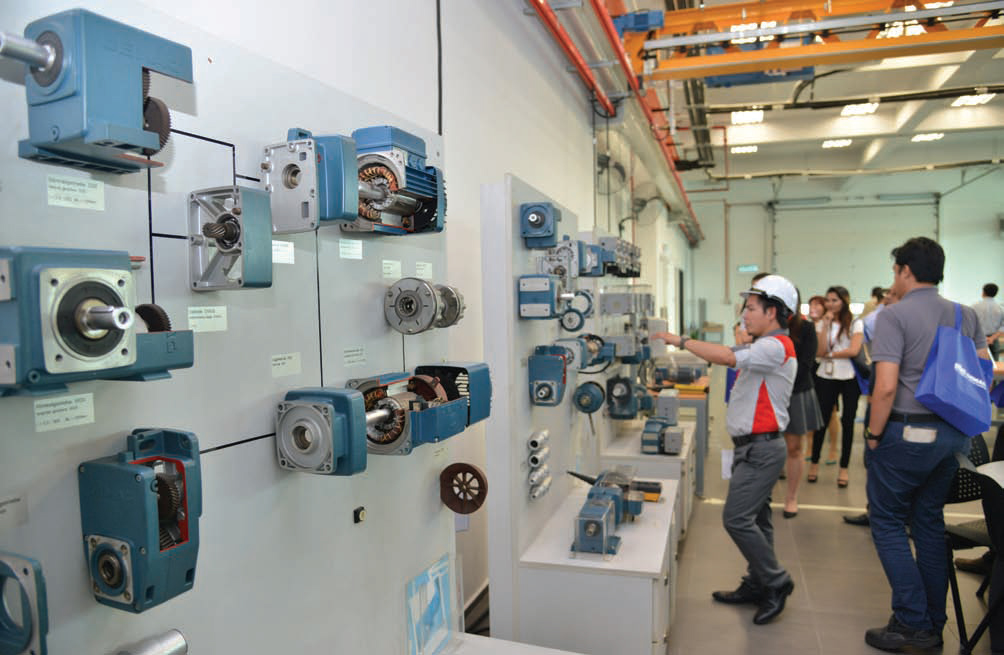 MHE Demag’s Regional Training Centre where employees and customers throughout the Group will attend skills training and upgrading programmes
MHE Demag’s Regional Training Centre where employees and customers throughout the Group will attend skills training and upgrading programmes
